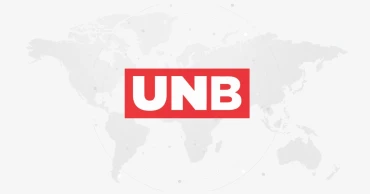Iran's protest
Women's protests overshadow Iran's World Cup loss
Iran’s players didn’t sing their national anthem and didn’t celebrate their goals. In the stands, many Iranian fans showed solidarity with the protest movement that has roiled the country for months.
Iran’s World Cup opener Monday against England was not just about soccer, but the political struggles gripping the Islamic Republic. And for some Iranian women, barred from attending men’s soccer matches at home, it was a precious first chance to see the national team live.
“Do you know how painful it is to be the biggest football fan and never go to a match in 34 years?” said Afsani, a 34-year-old beekeeper from Tehran, who traveled to Qatar to watch the men's team for the first time. She said she wept when she entered the Khalifa International Stadium.
Like other Iran fans, Afsani declined to give her last name for fear of government reprisals.
Iran lost 6-2 to a superior England team, but the result wasn't the most important to Mayram, a 35-year-old Tehran resident who also watched her first soccer match live. She was disappointed that the players didn’t show more overt solidarity with the protests at home.
“You have girls being killed in the street,” she said. “It’s hard to say but this is not a happy occasion. It is really sad.”
Iran is competing in the World Cup amid a violent crackdown on a major women’s protest movement that has resulted in the deaths of at least 419 people, according Human Rights Activists in Iran, a group that has been monitoring the protests.
Read more: England crush Iran to raise hope again: "It might just come home".
The unrest was spurred by the Sept. 16 death of 22-year-old Mahsa Amini in the custody of the country’s morality police. It first focused on the state-mandated hijab, or headscarf, for women, but has since morphed into one of the most serious threats to the Islamic Republic since the chaotic years following its founding.
Many Iran fans in Doha wore T-shirts and waved signs with the mantra of the uprising — “Woman, Life, Freedom.” Others wore jerseys bearing the names of female protesters killed by Iranian security forces in recent weeks.
In the 22nd minute of the match — a reference to Amini's age when she died — some fans chanted her name, though the refrain quickly faded out and was replaced by “Iran."
Other fans dressed in conservative black chadors and hijabs in the color of the Iranian flag cheered loudly for their national team. Many of them declined to speak about the political situation, saying it was not relevant to them.
Before international matches, Iran's players usually sing the national anthem with the right hands on their heart. On Monday they stood silently, their arms draped around each other's shoulders, prompting Iran’s state TV to cut from a close-up of the players’ faces to a wide shot of the pitch. During the match, the players didn't celebrate their two goals, something that has become common in Iranian league matches since the protests began.
The question of whether to root for the national team has divided Iranians. Many now view support for the Iranian team as a betrayal of the young women and men who have risked their lives in the streets.
“The protest movement has overshadowed the football,” said Kamran, a linguistics professor who lives in the verdant northern province of Mazandaran. “I want Iran to lose these three games.”
Others insist the national team, which includes players who have spoken out on social media in solidarity with the protests, is representative of the country’s people and not its ruling Shiite clerics. The team’s star forward, Sardar Azmoun, has been vocal about the protests online. He was on the bench during the match, to the dismay of fans who said they were looking to him to make a gesture of protest on the pitch. Two former soccer stars have even been arrested for backing the movement.
Read more: Iran sentences anti-government protester to death: Report
Ali Jassim, a 14-year-old Iranian fan, said he was sure the political crisis was affecting the team’s performance, as England went up 3-0 at half-time.
“I don’t know how they can focus in a stadium full of so many people who want them to fail, ” he said.
The Iranian government has tried to encourage citizens to support their team against Iran’s traditional enemies. Iran plays the United States on Nov. 29 — a contentious showdown that last occurred at the 1998 World Cup in France.
Observers note that the players are likely facing government pressure not to side with the protests. Already, Iranian athletes have drawn enormous scrutiny. When Iranian climber Elnaz Rekabi competed in South Korea without wearing her country’s mandatory headscarf, she became a lighting rod of the protest movement.
“At the end of the day, I want the players to achieve their dreams,” said Mariam, a 27-year-old sports fan and international relations student who traveled to Doha from Tehran to watch her first men's soccer match live. “It’s not their fault our society is so polarized.”
Mariam said a big achievement for the women protesting at home would be the right to choose whether to wear the hijab.
“But after that, women will go for their right to be in stadiums,” she said.
3 years ago

